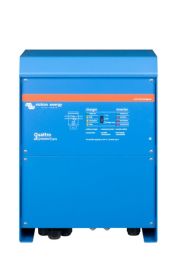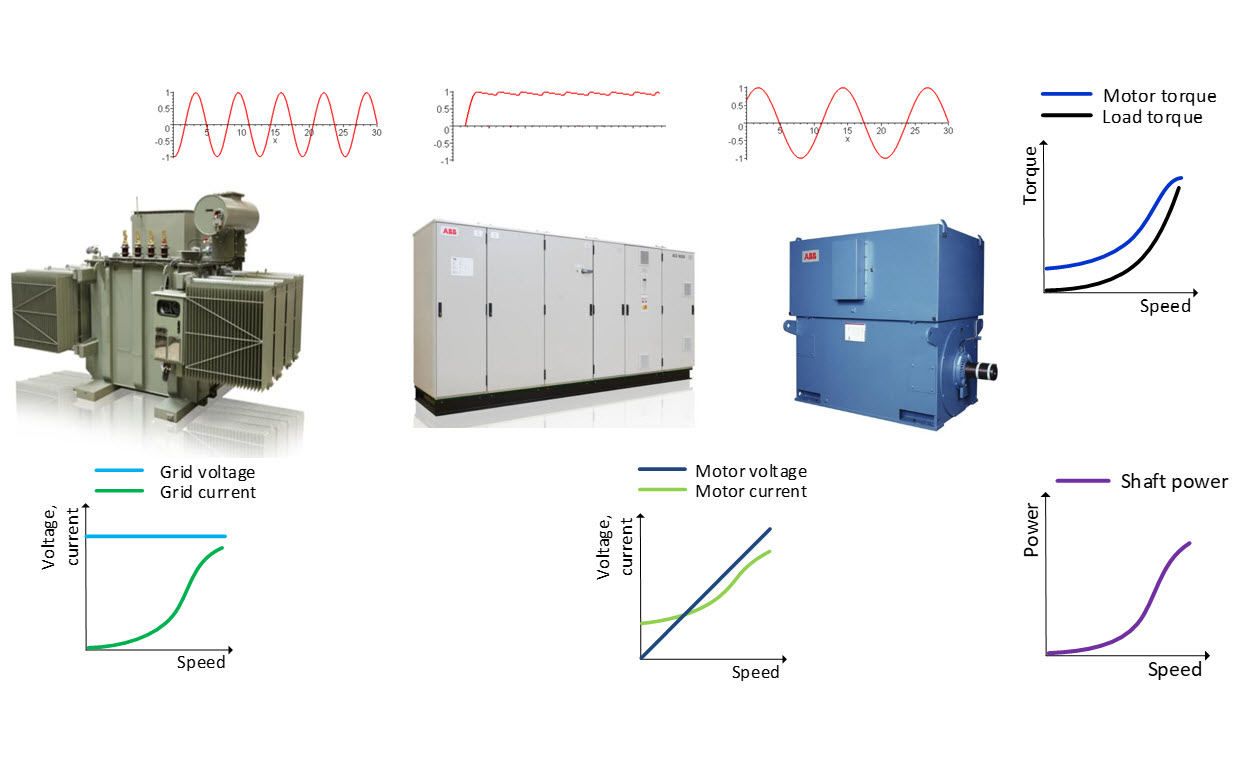I was assuming you were planning on using a large solar panel array and the battery would be just to buffer the load from variations in solar input. To run off batteries for 24 hours is going to take a seriously big battery pack. I hope you have deep pockets.
OK, first things first.
For this to make any sense we have to know what your load demand is actually like. Basically what percentage of the motors capacity does it take to run your load? Most of the time motors are loafing (running under 50% of capacity) and the reserve capacity is there for starting the system up and dealing with momentary increases in demand. In many applications the motor is not constantly running. The percentage of time the motor is running is called duty cycle.
Some likely applications (like running a well ) are a pretty constant load, but hopefully you are using a comfortably oversized motor (so the motor will last longer). I can't help you figure what your load or duty cycle are, but once you know this data we can help you refine the calculate of what it will take to power it.
Do you have power bills that show power consumption usage by the motor. That will tell us everything we need to know. Is the motor currently in use and is there any way your could measure how much power it is using? This is important data to have, that is is worth it to pay an electrician to come out and meter the motor.
Lets make some assumptions and see where this takes us. Once you have real numbers you can substitute them in my example.
Assume steady state power demand from the load is 10 HP (a reasonable guess based on conservatively engineered system). Next assume this motor is going to be run with a 50% duty cycle.
750W = horsepower so 10 HP = 7500W. A 50% duty cycle means the motor is going to use 3750 Watts per hour. Operating it for 24 hours = 90 kWH total.
If you change the motor power used or the duty cycle then the kWH per 24 hours will change.
Now we will try to take into account energy conversion efficiency. Some reasonable assumptions here. You will need to replace these numbers with the actual performance of whatever gear you select has.
- A 3 phase synchronous motor has efficiencies around 95%
- VFD efficiency should be around 90%
- Inverter efficiency should be around 90%
- Total conversion efficiency from DC to motor output = 95% x 90% x 90% = 77%
This means to get 90 kWH of motor output will require 90 kWH / 77% = 117 kWH.
Next your battery type has to be taken into account. I am going to assume you will go with a 48V battery system.
Deep Discharge Lead Acid: I suggest you use industrial (forklift) batteries. A typical example would be something like a Rolls 4KS-21PS. This is a 4V, 1100 AH cell (4400 WH) that will give you 3000 recharge cycles as long as you don't discharge it below 25%. That is comparable life to what you can get with a LIFEPO4 battery.

rollsbattery.com
To use 117 kWH of this battery capacity requires you to have 146 kWH of battery capacity. 32 of the Rolls 4KS-21PS will give you 140 kWH of battery capacity which is close enough. These cost about $1K each which means you will be paying ~ $30K for this battery pack. That price is a guess because I don't know what shipping is going to cost or what kind of quantity discount you could get. I bet the two will pretty much cancel out.
We offer an additional 2% discount* for cash, check or wire transfer.

www.thesolarbiz.com
Lithium (LIFEPO4): Depth of discharge can be 0%, but I wouldn't go below 10%, so lets say you would need 130 kWH of lithium batteries. Assuming a DIY system made from the Xuba sourced 280 AH batteries. 3.2V @ 280 AH = 896 WH. Eight of these batteries cost me right at $110 each (including shipping). In the quantities you are going to be buying them let's assume you can get them for $100 each (a guess). 144 of them will give you 129 kWH and cost $14,400 delivered. Add $600 for BMS and stuff and a final price of $15,000 is reasonable.
Based on the frankly amazing price you can get these 280 AH cells for, they are obviously the best choice from a financial standpoint. They will also weigh a lot less if that matters.
Now you have to replace my example usage numbers with real data.
- What motor power does your load actually require.
- What percentage of time will the motor actually be running.
- What do these cells cost in the quantities you will be buying them.
-Edit- If you use commercial 12V lithium batteries then the cost will be dramatically higher and the forklift batteries could end up being competitive on cost.
I have no idea what a solar panel system to power this is going to cost. I hope you have a lot of sunny days where your farm is.









